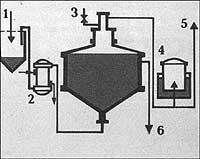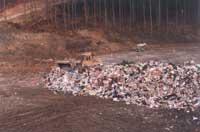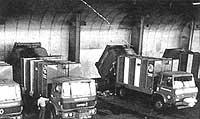Compost
1999/02/01 Imaz Amiano, Eneko - Elhuyar Zientziaren Komunikazioa Iturria: Elhuyar aldizkaria
In recent years, on the one hand, the gardens and the margins of the road are more numerous and, on the other, we take better care. Consequently, the amount of organic residue generated in it has also increased markedly, that is, herbs, leaves, branches of pruned trees, etc. All of this, so far, has been directly deposited in the landfill, but things will change. In fact, although composting is an ancient method, used mainly in gardening, there is currently a tendency to reuse these waste and has begun to produce industrially. This is due, on the one hand, to strengthen the social awareness in favor of recycling, on the other, that this type of waste requires a lot of space (since it is not anything compact) in the landfills and, finally, a European examiner, that since 2002 organic matter cannot be deposited in the landfills. Therefore, it is not surprising that in recent times there is news about the treatment and reuse of these waste in different media.
What is compost? How does it arise?
In the case of attending the Encyclopedic Dictionary of the Environment, the compost is "the product resulting from the controlled aerobic decomposition of organic waste, with characteristics similar to humus and that is usually used for soil fertilization". What is all that about organic waste, aerobic decomposition…? Let's explain it.
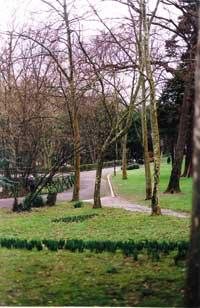
Compost can be naturally compounded with any organic residue. The origin of this waste may be domestic waste (e.g. food waste), agricultural waste (e.g. plant and animal waste, slaughterhouse debris), the plant remains of gardens or the waste sludge that are generated in the treatment of wastewater. Once collected, waste must be stored to initiate corruption or decomposition. What happens with aerobic oxygen decomposition (for example, rot of fish forgotten in the kitchen) (on the contrary, anaerobic decomposition is a rot process that is done without oxygen, for example, rot of eggs inside the shell). Two phases can be distinguished in the decomposition process for compost generation. Initially, microorganisms break down low molecular weight carbohydrates and proteins (sugars, hemicellulose...) and temperature increases rapidly. In the subsequent curing phase, organic molecules (such as cellulose) are broken down that do not degrade easily, keeping the temperature practically intact.
In general, there are two main technical procedures for this decomposition: metallic composting and accelerated composting. The first consists of the disposal of waste in tanks, in open air, and the process is relatively natural. It is enough to have the wet trash so that it does not dry and mix or turn it occasionally so that there is no lack of oxygen throughout the tank. In accelerated composting, waste is deposited in a closed and separate place from the medium, controlling different parameters (temperature, humidity, ventilation, carbon/nitrogen ratio, addition of possible elements, etc. ). The objective is to reduce composting time and, in addition, the increase in temperature that occurs is sufficient to eliminate pathogenic microorganisms, causing diseases or those that can cause.
However, the microorganisms (mainly bacteria and fungi) that make the decomposition are the same as the residues. It is obvious that the composition of the compost can vary considerably depending on the waste used, the circumstances in which the decomposition occurred and the execution of the same. In addition, other materials (clay, vegetable soil, etc.) can be added to the compost. depending on the characteristics to be given to the final product. The process completion time may vary between a month and a year, depending on the method used, but if done correctly and fully, the final result will be cured compost.
Composting plants
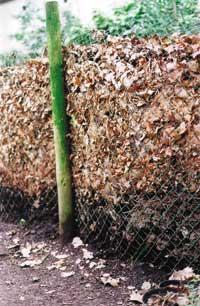
If you want to carry out this whole process in a controlled way a plant is required specially prepared for it. Bizkaia and Gipuzkoa are already working on the implementation of such a centre. In both cases, landscaped plant remains will be used as raw material for the preparation of the compost, since it is actually simpler than the use of all types of organic waste. In Bizkaia, at the initiative of public institutions, at the end of February the plant waste treatment plant will be inaugurated in Aiarzas (Derio).
It will treat annually 1,800 tons of vegetable waste, which will generate 681 tons of compost. In Gipuzkoa, however, the initiative is private. The plant set up earlier this month in the Zerain area plans to compose most of the Gipuzkoa waste (only from the San Marcos community in the Donostia area would get about 3,000 tons). In the latter case, in addition to waste from the management of public spaces, plant waste generated by individuals or private entities will be collected. Finally, in Navarra (in the EDAR of Arazuri itself) there is also a company that manufactures a similar product but that uses sludge residues as raw material for the subsequent mixture of plant waste.
In any case, taking into account that vegetable residues are used for the preparation of the compost, once they are collected they will proceed to the extraction, crushing and homogenization of the fibers (mainly wood) before proceeding to their deposit and rot. The equipment to be used will, of course, be special, the fiber vending machine, the mixing or turning devices and the temperature and humidity measurement systems inside them. The final product can be used in gardens, slopes, football fields, etc. Due to its wide variety of microorganisms and its high water retention capacity, it is very appropriate to mix it with soil and biologically enrich it and cure it.

Gai honi buruzko eduki gehiago
Elhuyarrek garatutako teknologia




